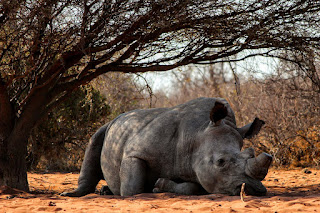Hello Indonesian Culture Friends, On this occasion I will bring a discussion about The Indonesian Sumatran Rhinoceros is Nearly Extinct - Indonesian Culture.
According to the 2018-2021 Sumatran Rhino Emergency Action Plan released by the Ministry of Environment and Forestry, the endangered Sumatran rhinoceros is on the brink of extinction in the wild. Without radical conservation efforts, this species could vanish within the next decade.

In earlier times, the Sumatran rhinoceros (Dicerorhinus sumatrensis) was widespread in Southeast Asia, from the Himalayas to Indonesia. However, today, conservationists estimate that there are fewer than 100 individuals remaining in the wild, and these are restricted to the forests of Sumatra and Kalimantan.
Habitat
The Sumatran rhinoceros is typically found in hilly areas close to water, inhabiting tropical rainforests, montane moss forests, forest margins, and secondary forests. Due to increasing fragmentation of forest areas on the island of Sumatra, their habitat can be broadly categorized into two groups, lowland habitats, such as Way Kambas National Park, and upland habitats, such as Bukit Barisan Selatan National Park and Gunung Leuser National Park.
Population
The Sumatran rhinoceros population was once widespread across Assam-India, Myanmar, the Malay Peninsula, Sumatra, and most of the island of Borneo, with isolated populations in Vietnam, Laos, and Cambodia. However, currently, the largest remaining population of Sumatran rhinos is in Indonesia, primarily in Leuser National Park, Bukit Barisan Selatan National Park, and Way Kambas National Park, with a small isolated population in Kalimantan.
The population of Sumatran rhinos has declined significantly since the 1980s and 1990s due to poaching, with the largest remaining population estimated to be between 145-200 individuals inhabiting various parks in Indonesia. The decline in population has been driven by various factors, including loss of forest habitat due to encroachment, changes in forest function to cultivation areas, illegal logging, and hunting for their horns, which are believed to have medicinal properties.
Physical Characteristics
The Sumatran rhinoceros is a two-horned species, with a front horn (anterior) ranging from 25-80 cm, and a shorter rear horn (posterior) that is no more than 10 cm. It is the smallest rhinoceros species, with a body weight ranging from 600-950 kg, a height of 1-1.5 m, and a length of 2-3 m. The eyes are small, and the skin is thin, smooth, and reddish-brown in color, covered by short, stiff hair of varying colors, which are mostly blackish-white. The species is known for having two main skin folds, one behind the front legs and one around the belly, and their feet have a wide surface area with three semi-circular nails each.

Post a Comment for "The Indonesian Sumatran Rhinoceros is Nearly Extinct - Indonesian Culture"